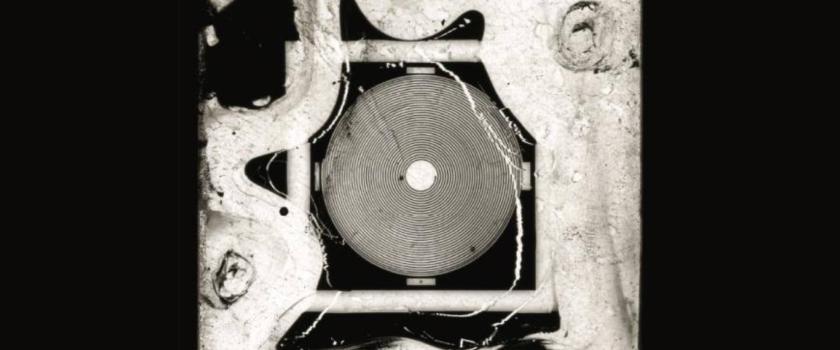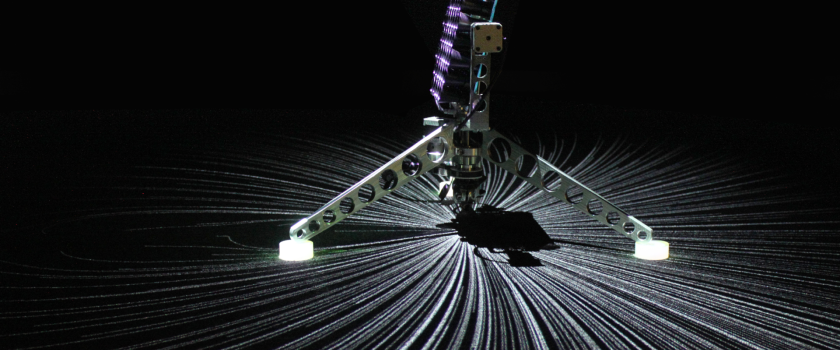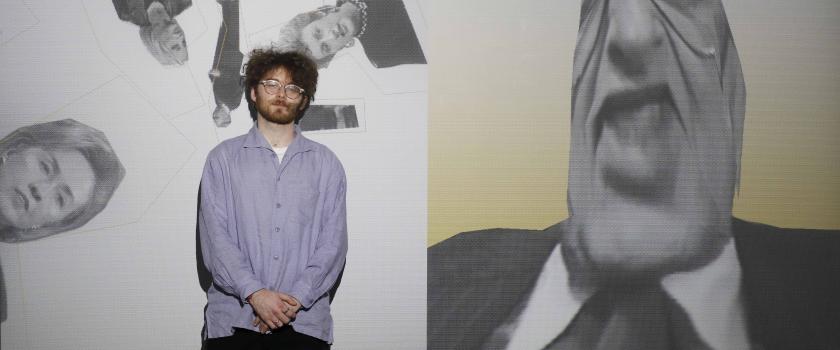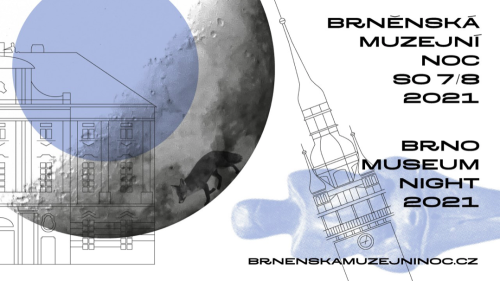Brno Museum Night 2021
Vasulka Kitchen Brno will be open during Brno Museum Night on Saturday 7 August from 6 pm until midnight. There will be a new exhibition of Woody Vasulka’s prints, including the installation Noisefields: Light Revisited, outputs of international audiovisual workshops, and the presentation of the interface of an interactive mobile app by artist Petr Svárovský, aimed at atypical descriptions of places around Brno.
18:00—24:00 Interactive mobile application by Petr Svárovský for Brno Brno Viewpoints
Experimental Android app FLEKY, which will be presented by Vašulka Kitchen during the Brno Museum Night, has been adapted by artist Petr Svárovský for Brno. Using augmented reality elements and Brno’s dialect called hantec, visitors can use the app to visit a variety of places in the area and learn about the remarkable events that related to them. The creation of the entries was entrusted to a literary collective and experts on local nightlife KKRD Boys, whose distinct poetics make for an unusual and atypical guide to users to share with them a number of interesting places in Brno that are worthy of attention. During the museum night, the app will be open for active participation of viewers/users who can create new places and comments.
Instructions:
The app called Fleky is available for free download on the Google Play Store. Access to the app and its active use will be available on Saturday, August 7 from 6:00 p.m. to 12:00 a.m. based on a password, which you can pick up at the Vasulka Kitchen Brno in the House of Arts on Malinovského nám. 2-
The Fleky app will offer a list of places near Vasulka Kitchen Brno. The user can choose one and the mobile phone will guide them to it. Once he arrives at the destination, he unlocks the a screen with full text describing the location. The user can thus experience the atmosphere of the location, including its sounds, smells, footprints and weather conditions. Those who wish to personally can share their impressions and experiences and place them on the locations where they took place.
The app is only available for Android mobile phones for now, Apple is unfortunately still in the testing phase.
Peter Svárovský’s artistic and creative intention is to connect globalised technology with the necessity of physical movement in space. The application, based on GPS coordinates, is connected with a specific place and also a local dialect, which makes it a locally specific event. It is the relationship between the shared, common, unified virtual space and the local experience and real experience is the main goal of the author. For this reason, too, the app does not take the form of of a map, but is made up of arrows that make visitors go to an undetermined location, where they can read an entry linked to that place. The app thus focuses on the tense relationship between temporary, physical and local space and the infinite, virtual and ubiquitous infosphere, or our excessive use of mobile phones on at the expense of our perception of reality. Through the combination of these two spheres, interactive applications conveys an experience that allows its users to perceive and discover the places they visit in new ways.
The mobile app project was originally developed in Norway for the Lofoten archipelago. It allowed locals to create a record of the history of where they live – from prehistoric times through the Viking period and World War II. to the present day, and share it also with the wider community. ⠀ Petr Svárovský (b. 1962) is an artist, author, new media and virtual reality. Recently he has been interested in the technological possibilities and use of the mobile phone and applications that are a means for virtual and physical experiences shaped by collective participation and strategies that aim to push the boundaries of art beyond the commonly defined territory.
KKRD Boys is a group of Brno-based writers who move on the edge of controversial anecdotal content combined with sharp humour and satire. Their language draws on Hantec and is inspired by contemporary Brno speech. The stories are based on true stories and Brno realities. They were recently awarded the prestigious Magnesia Litera prize. The work of KKRD Boys has been dramatised by the Husa na provázku theatre, among others.
18:00-24:00 Current exhibition
A new selection of Woody Vasulka’s digital prints from his 1977-2003 Lucifer Commission series, in which the artist recorded scans of computer circuit boards found in various stages of destruction in a warehouse in the backyard of his Santa Fe home. The hardware prints can be read as diagrams depicting the hidden and autonomous workings of the machines that fascinated the Vasulkas both.
The Vasulkas’ unique audio-visual installation, Light Revisited - Noisfields, will also be on view again after an extended period of time. The video-environment, created by projecting pulsating circles formed by electronic signals onto the walls of the room, is Woody’s 3D transformation of the 1974 collaborative video Noisefields. Noisefields records the birth of a video-image from an electronic signal, it is electronic visual music and a sounding image at the same time.
The electronic image consists of two parts - a circle in the centre and a background filling the rest of the screen. The two components of the image constantly pulse in sync with the sound generated by the activity of the electronic device. One of the parts always displays pulsating colour and the other the rough, unstructured material of the video - the ‘video noise’.
18:00-24:00 Presentation of outputs from international online workshops
VECTOR SYNTHESIS led by Derek Holzer - participants explored the relationship between sound and image. The result is projections of digital artworks created with contemporary computer graphics, but also with contemporary laser imaging techniques. The workshop was inspired by the artwork of artists such as Mary Ellen Bute, Nam June Paik, Stein and Woody Vasulka, and Gary Hill.
DATA ORCHESTRA led by Jiří Suchánek - the workshop introduced participants to the principles of sonification and their use in their work, creating their own datasets and then algorithms converting selected datasets into sound structures in Max/msp environments. During Brno Museum Night, sound performances by participants will be presented.
With the financial help of the Statutory City of Brno and the Ministry of Culture of the Czech Republic.





